Some folks were asking me about what sort of work I was doing in Australia. As you do when you’ve worked in one profession for long enough, you accumulate a collection. Most farmers collect tractors. I, too, have a tractor gallery, you’ll find it below. Below are some of the rigs and implements I operated while Australia and Canada while working on farms.
For those of you not privy to the knowledge of tractor operation, I’ll tell you a bit about the tractors involved. The smaller tractors you see pulling some implements were around 100-200 horsepower (including the one that pulled the grape harvester) while the seeder rigs and discs required a larger tractor around 350-450 horsepower. All were power steering except for the rock picking tractor which was manual. Some had power shifting while others had stick control through 8 or more gears. The smaller tractors had a braking system which you could pin one rear wheel and do a complete 180 degree turn, though you’d leave some marks if you did. The larger tractors with eight wheels (four sets of two) are called “articulated” which means the middle moves. If you don’t make eye contact with the operator before you try to climb up you can be crushed. This articulation enables the rig to make sharp turns while pulling large implements.
***
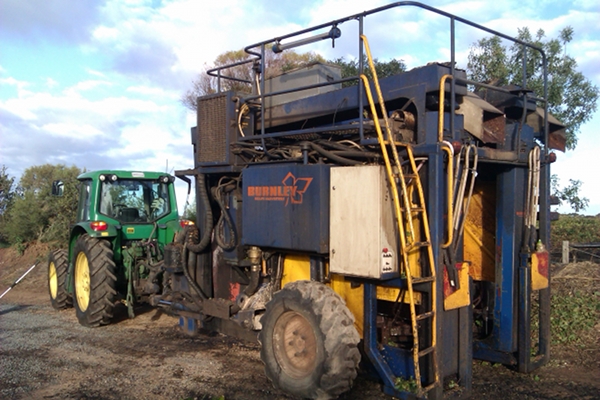
The Grape Harvester
Featured in my post about the Great Australian Grape Harvest, this is a neat machine. A lot of backpackers to Australia can attest to picking grapes by hand, I didn’t. The farm I worked for had a tow-behind grape harvester that shook the grapes off of the vines. Though the machine looks complex, it is a series of rather simple steps: consisting of a set of “fingers” that shake the vines, the grapes then fall onto one of two bucket augurs which brings them up onto the conveyor belt, the conveyor belt extends from the harvester and drops the grapes into a bin (which I drove one row over from the harvester.) Cleaning it, however, was a messy and annoying affair. Not only did you have to wash out all of the grapes, spiders and twigs from the machine (being careful not to lose a finger in one of the exposed moving parts), after the wash down required greasing every bearing with a special vegetable grease. You wouldn’t want petroleum in your wine, would you?
***
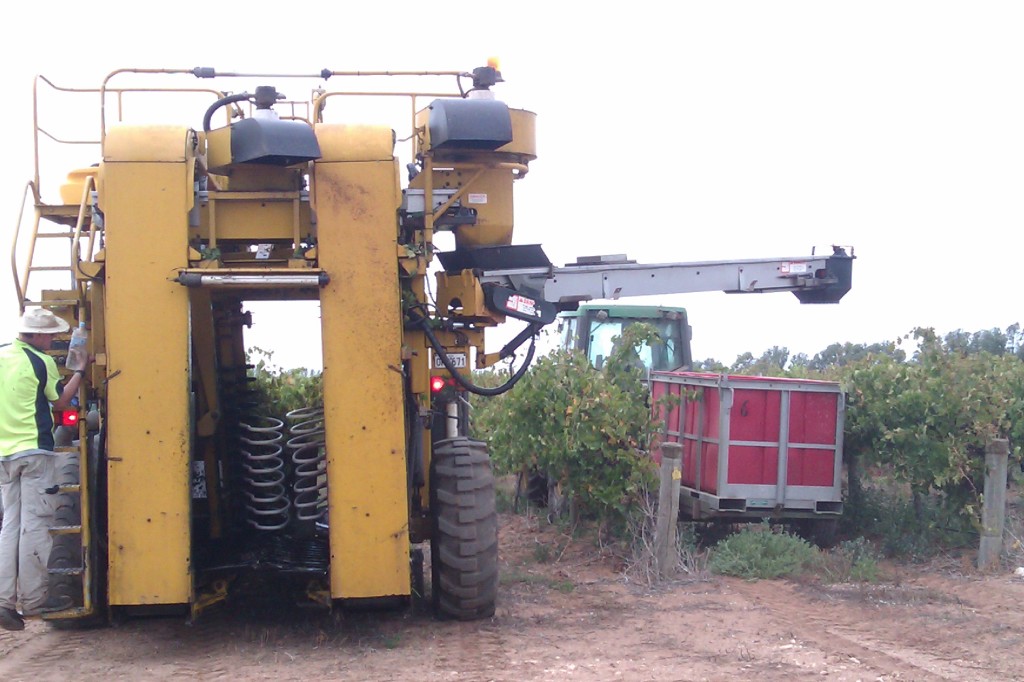
Chaser Bin
Used to catch the falling grapes from the grape harvester, driving this thing was almost like a video game, except you had to stay awake and when you hit a fox hole, you knew. The model I drove still had the stick shift, but some of the other tractors were the power shift model much like you find in race cars. All you gotta do is flick a switch and up you go. Careful, gear up or down too fast and you’ll jerk the machine and cause your coffee to go flying. Don’t make any more work for yourself, use your gears slowly.
***
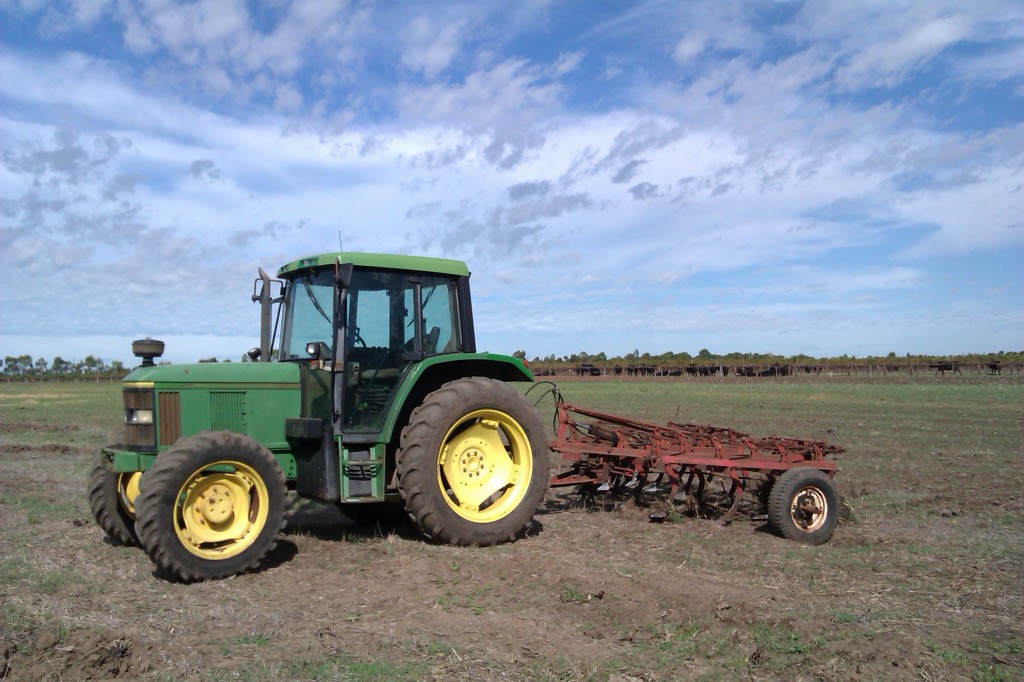
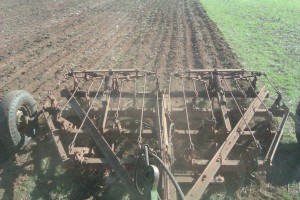
Ploughing
Back in the old days this contraption would’ve been pulled by an ox, mule or horse with me behind it whipping the thing to keep moving. Not any more. Air conditioning, AM/FM radio, an mp3 player and a chocolate bar, my how times have changed. Ploughing was a fun activity since I’d never done it before, especially in the “round and round” pattern, that is, instead of completing the typical two or three headlands and then going up and back, I started on the outside lap and just kept making smaller and smaller circles inward. I’m sure you’re supposed to start from the middle, but my boss wasn’t too specific about how I did it. All he said was to go round and round. So I did. I got through one field well enough but on the second we had a hydraulic hose break so that put a stop to my work for the day.
***
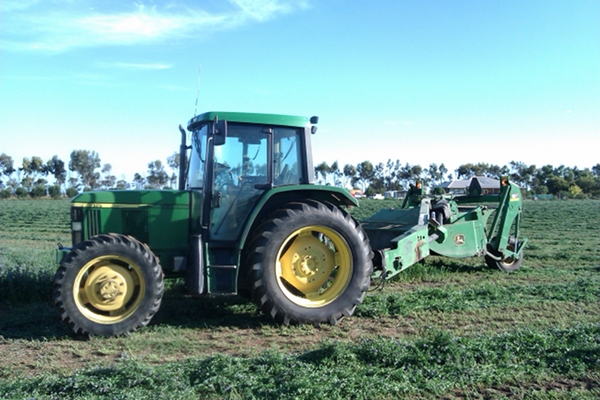
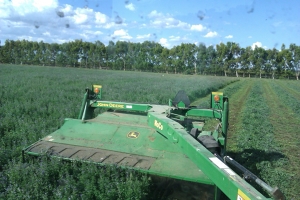
The Mower
If you’ve ever driven through the Canadian prairies or, indeed, any farm land, chances are you’ve come across fields of hay bales. Well, before they are baled, they need to be cut, and that’s what this guy does. Placed at an angle, the mower snips and gathers the hay (often oats) into a nice line so it can dry and subsequently be baled into a nice round cylinder.
***
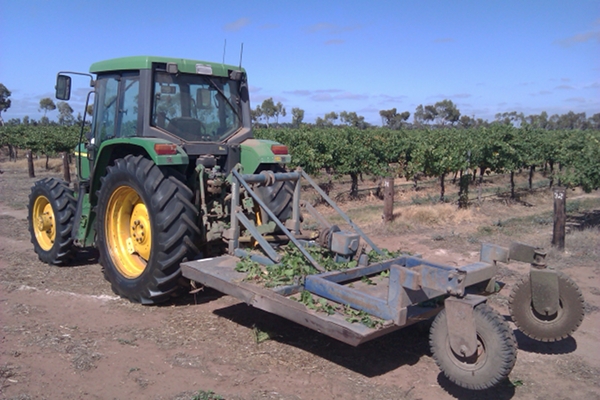
Slasher
A type of lawn mower, except bigger and not as easy to maneuver. There was little flexibility with this implement because it attached directly onto the PTO shaft on the back. That meant you couldn’t snake your way around fence posts but had to pull all the way out and then make the turn. Used mainly to cut down the weeds and grass among the vines before grape harvesting began.
***
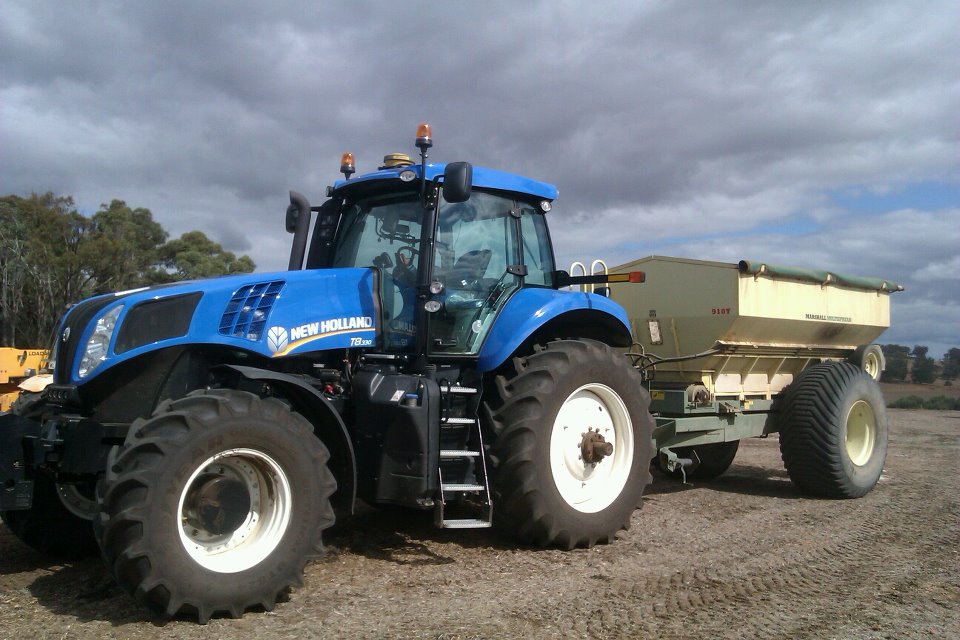
Spreader
Chugging along at 15 to 22 kms an hour, this new New Holland tractor pulled 10 tonnes of lime (white beach sand) with no problem. Up hill, down, round corners and along hills, driving this guy felt much like Mario Kart. I would mention this to my co-workers and they’d dub me “Luigi” (because of my blue plaid flannel jacket). The spreader consisted of a funnelled-box and a conveyor belt that moved the sand/product toward two spinning discs. I write “product” because these are the same sort of machines that some farmers use to spread manure. (Just thought you should know.) Although the tractor here is pictured with only one set of rear wheels, we’d later put on another set, called “jewels” by the Aussie folks, but written “duals”, as in, “two”.
***
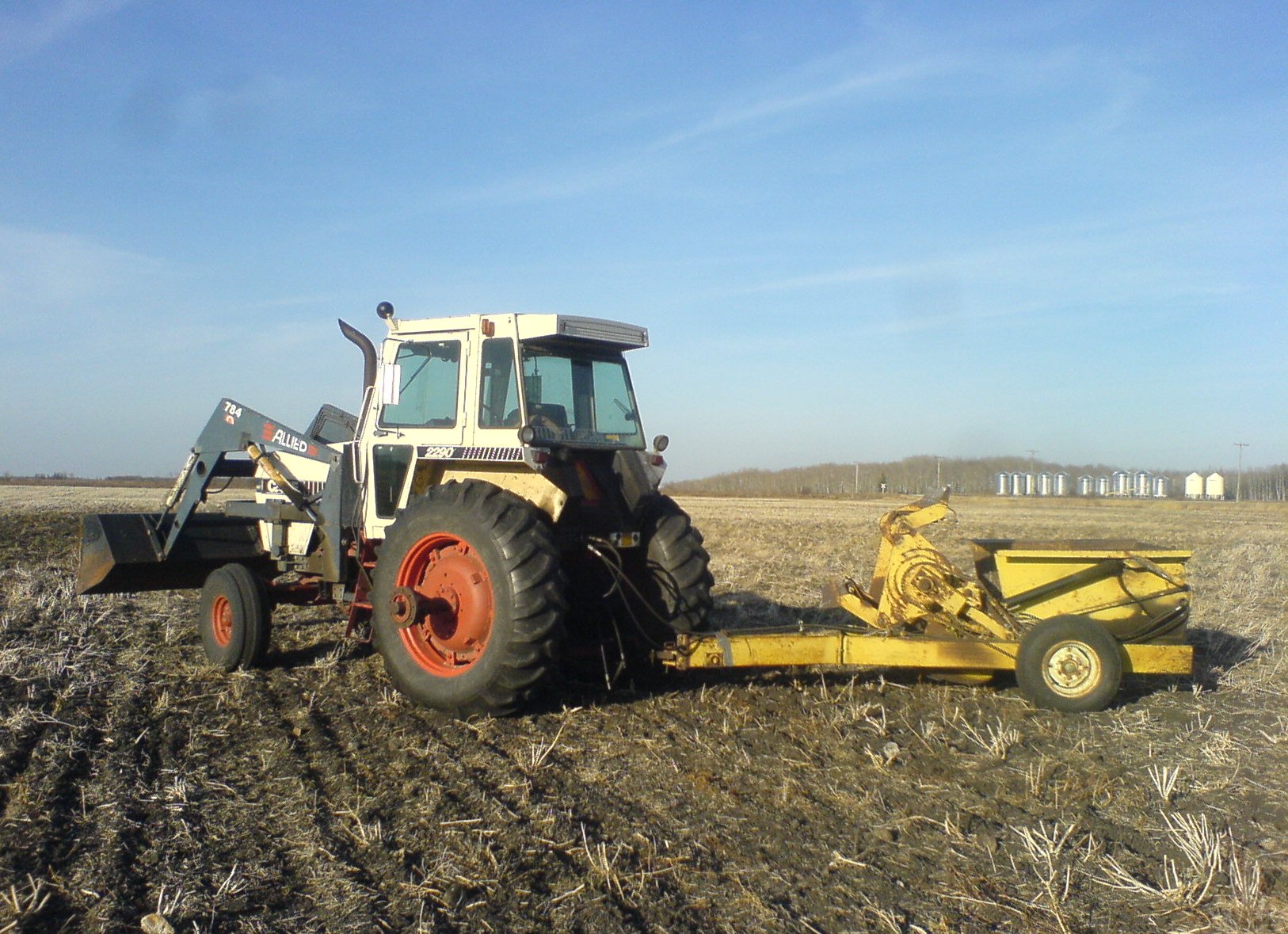
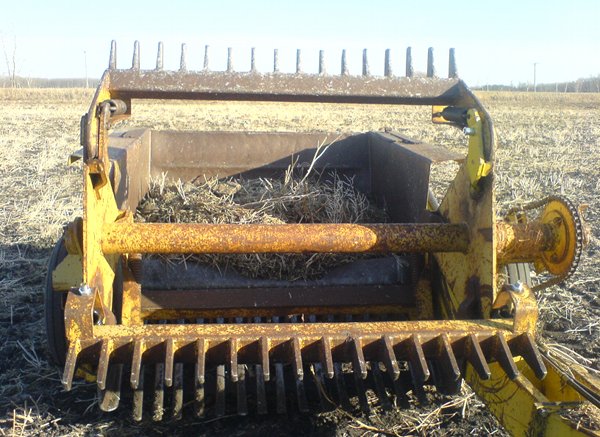
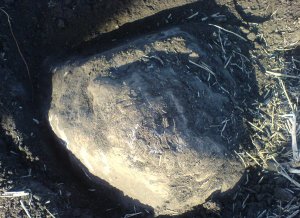
Rock picker
Alright, I used this machine in Canada but this one is too neat to pass up. No GPS guidance or auto-steer here nor is there really any more pattern than just picking up the big rocks. And by big, I mean the size of a soccer ball or bigger. It’s a never-ending activity, fun for the whole family, and a good way to build character. There is a certain tranquility that comes with picking rocks, and a certain pain, too. Before, during and after the cropping program you’ll come across huge rocks that will need to be moved into a nice little pile. A proper rock picker has a set of “claws” that run either by a hydraulic mechanism or by a chain drive. The one pictured above is a chain drive. As you lower the implement to the ground, the bottom of the implement will dig in a little and the rock will be swiped into the bucket by one of the claws. It sure beats picking rocks by hand though if you miss it then you gotta take another swing at it.
***
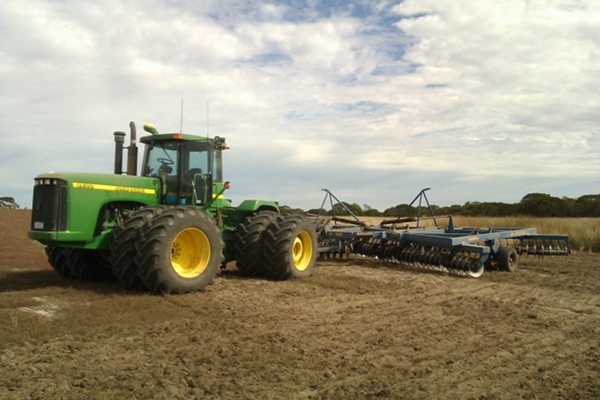
Discs aka “The Grizzly”
Now we get into the articulated tractors with much more horsepower. I guess in Australia the disc machine is made by a certain brand and they call it “The Grizzly.” Whatever the case, these discs are used to chop up left over stalks from last year’s crop and to overturn the soil. Not as wide as the seeder rig but much more durable. The discs need to be kept well greased since dirt can often plug them up causing the rig to get bogged down. It was best used to chop up the melly roots that were found on some of paddocks.
***
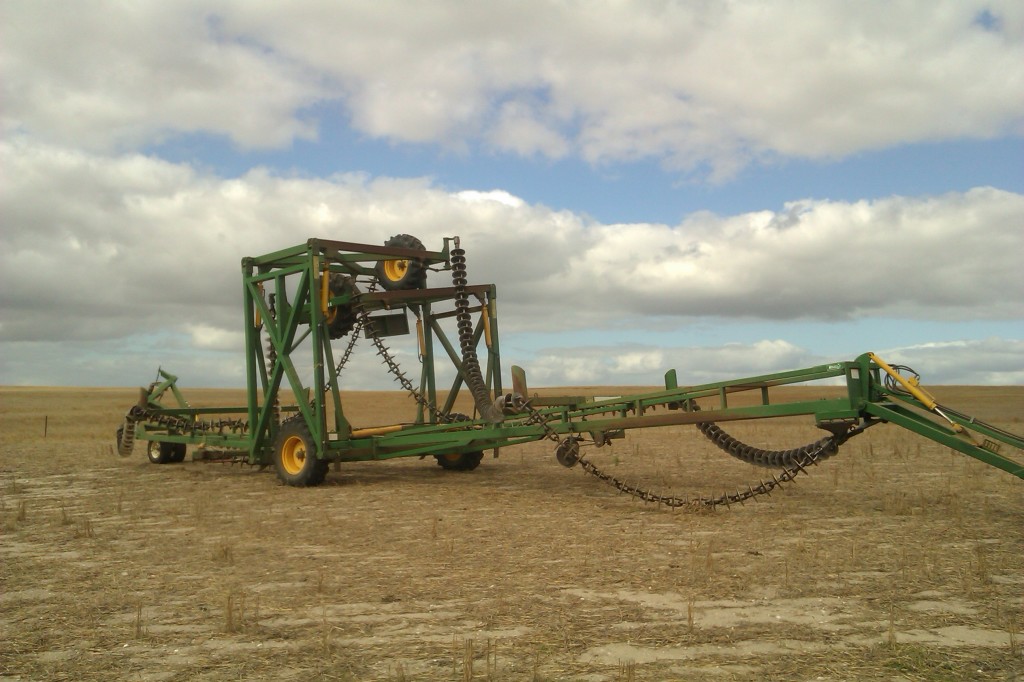
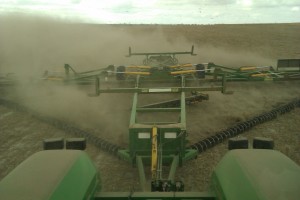
Kelly Gang
I’m not sure if this implement is named after the notorious Australian gang leader of the same name (was he a farmer?), but this implement operated in much the same way as the Grizzly with a couple of differences. First, the discs were smaller which meant it didn’t cut too deep, second, it was much wider than the Grizzly (around 60-75 feet, I think) which meant you couldn’t get into some of the places that the seeder would later go. Unfortunately, after driving for three hours to pick the thing up from another farm, we had no luck in utilizing this implement to chop up the annoying melly roots that plagued a good portion of the arable farm land. We had to let this go since it just wasn’t worth to keep going over the field.
***
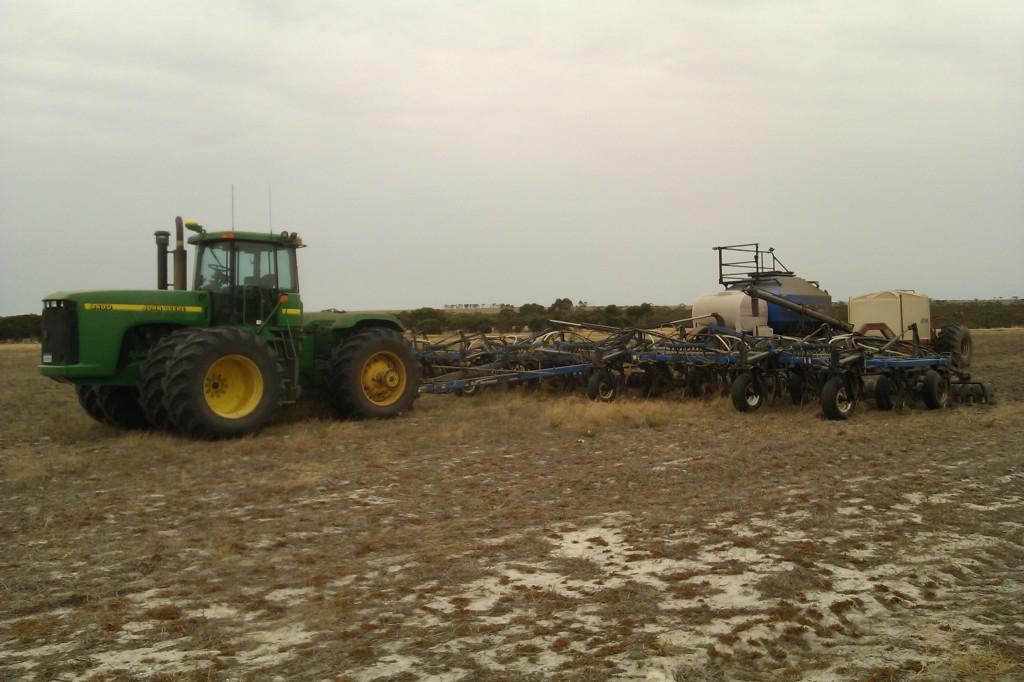
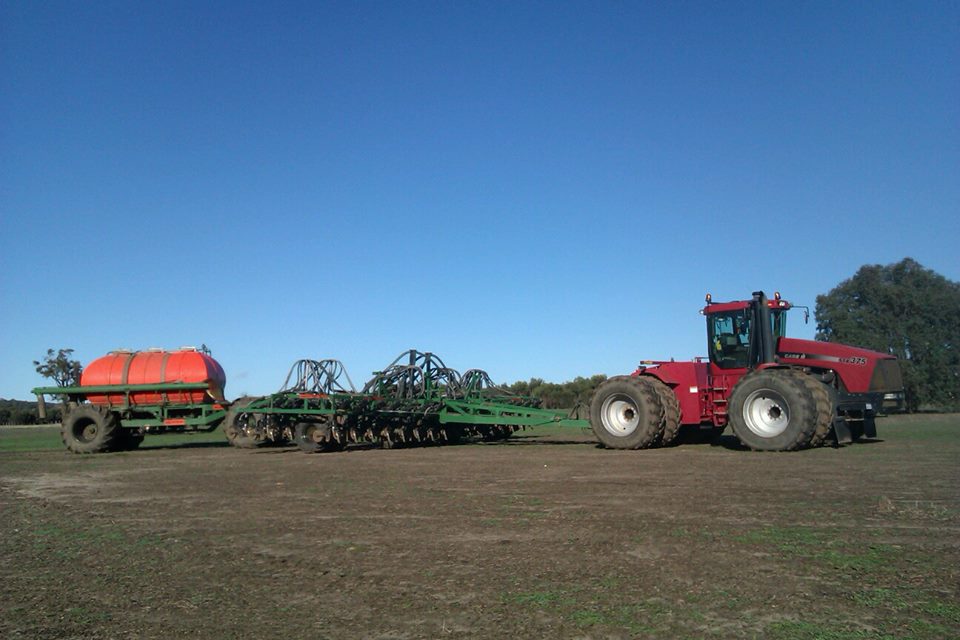
Seeder Rigs
And now for the main event! The first seeder rig I drove measured 60 feet while the second seeder rig measure about 40 feet. Why the difference? The 60 foot bar was good for long stretches of flat land along the southern coast of West Australia while the 40 foot bar was more suited to the incredibly hilly and disjointed terrain closer to Perth. The entire rig consisted of the tractor, seeder bar, and seeder bin. Some farmers choose to haul an extra bin behind the seed bin itself for extra fertilizer. The orange bins, however, made by Auseeder, carried the seed, liquid and granular fertilizer in separate containers on the same rig.